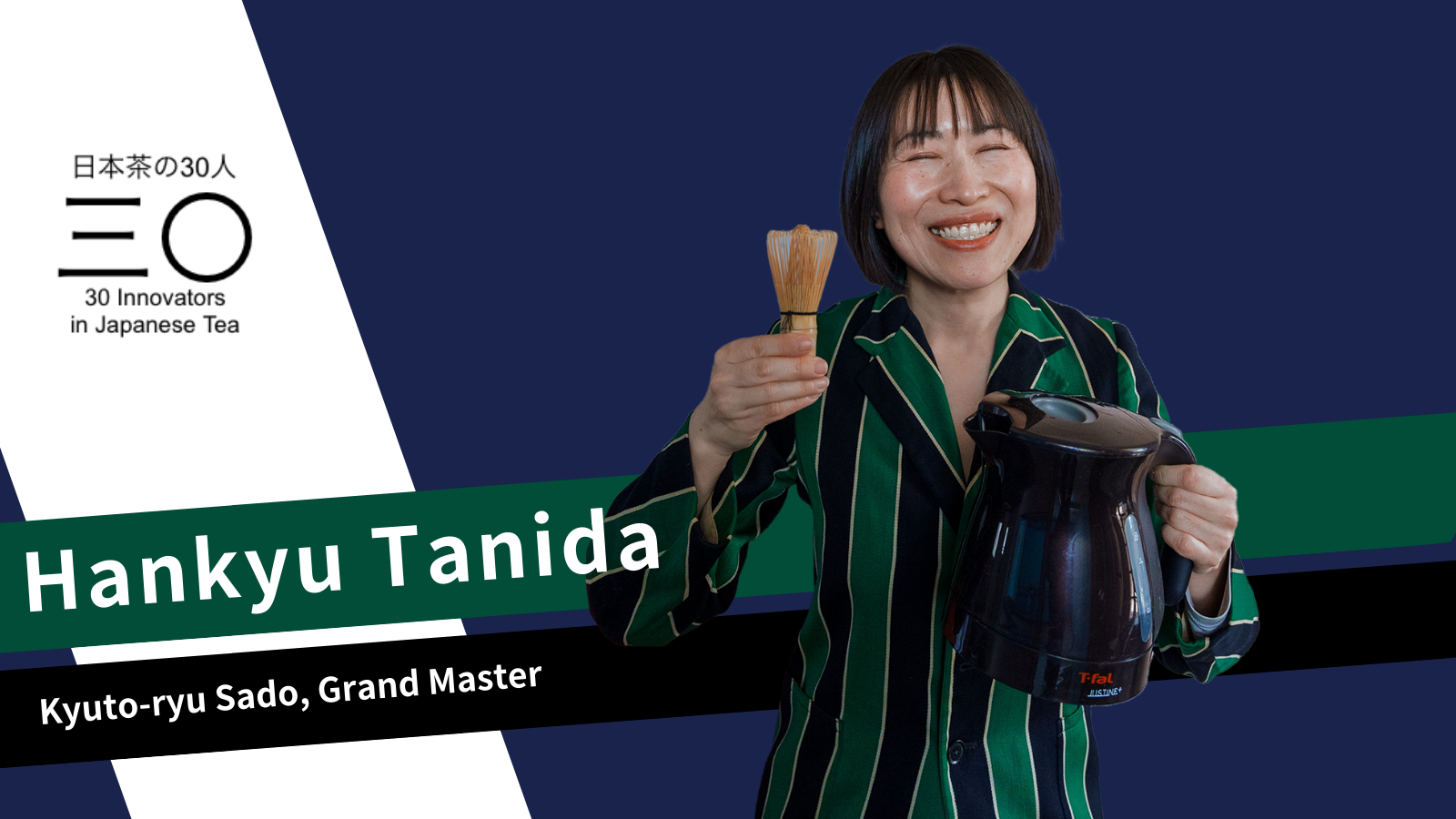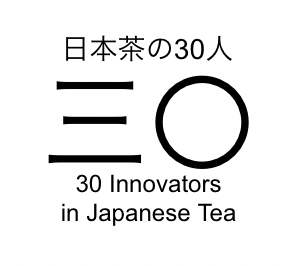If you ask a tea lover, ‘Do you know tea?”, you will often hear the answer, “I like it, but I do not know it well”.
This is probably due to the common understanding that there is more to tea than just liking it and tasting good, and that there is a path to mastering tea through daily training and discipline, similar to martial arts and calligraphy.
There is a group that is trying to rethink tea from a modern point of view. They are the Kyuutouryuu Sado (給湯流茶道) – Office Kitchenette Style Tea Ceremony.
Office workers are the modern-day samurai. Office kitchenette is the modern-day tearoom. They make matcha in the same anime tea bowls they used daily when they were children, and their tea names are “Half-day off”, “Paid holiday”, “Three-day holiday”’, etc.
Is this the “seeing it in a different way” that is important in the tea ceremony? Is it a parody?
Since 2010, the Kyutouryuu Sado has held more than 120 tea ceremonies, with more than 2,000 participants, ranging from tea ceremony beginners to tea masters, and the themes of the tea ceremonies are always intellectually stimulating. These efforts have also been featured on the BBC web news. They are opening up the benefits of matcha from leisurely madams to people who struggle at work every day.
We spoke with Hankyu Tanita, the leader – (tentative) iemoto of the modern tea ceremony movement – Kyuutouryuu Sado.
Kyuutouryuu Sado – Office Kitchenette Style Tea Ceremony, Hankyu Tanida
After graduating from Keio University, Tanida-san went on to work as a company employee. In 2010, she formed a tea ceremony group – the Kyuurouryuu Sado, which serves matcha in the office kitchenette – the “battlefield” for company employees. In modern times the group recreates episodes of the tea ceremonies held on the battlefields by military commanders such as Hideyoshi, and makes matcha in the workplaces of those fighting against layoffs, power harassment, etc. Beyond the office kitchenette, they hold tea ceremonies in various places of impermanence, including a London law firm, an abandoned railway station, a defunct coffee shop, and a strip joint in Dogo onsen.
Contents
Kyuutouryuu Sado – Office Kitchenette Style Tea Ceremony
Q: Please tell us how you started the Kyuutouryou Sado?
Tanida: The main reason for starting it was the belief that modern businesspeople needed matcha and tea ceremonies.
Did you know that the tea ceremony was popular during the Warring States period?
Of course, many tea ceremonies were held in magnificent tearooms at that time, but at the same time, there were also people who took the tea master Sen no Rikyu to wars and brought tea utensils to the battlefield. There are stories of the tea ceremonies being held on ceasefire days.
So why did military commanders drink matcha during the war?
Personally, I think this is because matcha contains both a relaxing ingredient (theanine) and an alerting component (caffeine). I believe that by drinking matcha in a place where they would live or die, warriors calmed themselves while at the same time motivating themselves.
We live in modern times and do not have to go to war, but working and raising children are just as tough. Just as military commanders drank matcha to keep their spirits up, I believe that matcha can be helpful for modern-day people when they are dealing with work and raising children.
It can take place anywhere, in the office kitchenette, at home. “Drink matcha at your own battlefield”, is the message of Kyutouryuu Sado.
Q: What is the concept behind the Kyuutouryuu Sado?
Tanida: The concept is that all things are impermanent. I would like to cherish the perspectives like “No matter how hard things are, they will not last forever” and “Do not immerse yourself in sadness or frustration, try to stay calm”.
When you are working, you may get angry with your boss who you do not get along with. But that person will probably retire someday, and there is a possibility that he or she will be demoted.
In fact, even during the Warring States period, when people had trouble building relationships with those in power, they held the tea ceremonies to relieve stress. It is said that Sen no Rikyu once held the tea ceremony to console a monk who had been moved to the left because of the anger of Toyotomi Hideyoshi.
When you feel like “My boss is bullying me again. I just want to die!”, drinking matcha will help you calm down and think, “Well, my boss may retire next year”.
Q: Please tell us about the Kyuutouryuu Sado activities.
Tanida: When we started, it operated as a school of office workers holding tea ceremonies in the office kitchenette. Now, we are invited to give tea ceremonies at events all over the country.
We started our activities in 2010, and this year marks our 14th year. We have had about 2300 participants in total.
Q: What are the office kitchenette tea ceremonies like?
Tanida: These days we hold them in our own style.
There is also the idea of “seeing it in a different way” during the tea ceremony. We find elements of wabi sabi not only in craftsmen-made tea ceremony utensils, but also in everyday utensils like pots for food preservation and vegetable baskets, and we bring them into the tearoom. In the office kitchenette style tea ceremonies, anime tea bowls from the Showa era or before the war are often used to resemble rustic tea bowls.
We add sieved matcha into an anime tea bowl and whisk it with a chasen. Once that is done, we pass it to the participants and start the tea ceremony by explaining things like “the way of the Kyuutouryuu is seeing it in a different way and the reason for using the anime bowl is…” Lastly, we go around filling everyone’s anime bowls with hot water using black Tefal kettle, and have them whisk it themselves. This is a rough outline of the flow.
Easy, delicious, and comforting. You can drink matcha instead of coffee.
Q: What do you think makes the office kitchenette style tea ceremony so popular?
Tanida: When we say something like: “At this event, this hallway is designed to resemble the tea ceremony room built by Sen no Rikyu”; people always say: “That is interesting”.
There are many people who have experience in the tea ceremony at the Kyuutouryuu Sado. At first, they may wonder, “What is an anime tea bowl?” or “What is this joke of the tea ceremony?” But as they listen to us, they often say, “It is surprisingly proper” or “I did not know I should look at the history of the tea ceremony this way”.
Q: Please tell us about your future vision.
Tanida: We would like to bite into the beverage market for business people, that is, the coffee and energy drink market. Coffee is popular for its ingredients that lift the mood, but in addition to those ingredients, matcha also contains ingredients that “calm the mind”. I think this is the main point.
When you want something tasty to drink at work, it is much easier and faster to make matcha than to make hand-dripped coffee. If you keep fresh matcha in the freezer, you can drink very tasty matcha right away with just a little bit of whisking. I hope that the busy people of today can enjoy delicious matcha easily and conveniently at the office.
If business people could enjoy matcha in addition to coffee, everyone would be healthier. I want people to be able to casually drink matcha at work.
Q: By the way, what kind of person is Hankyu Tanida?
Tanida: I am an idle employee, whose only purpose in life is matcha and idols.
In fact, there is a waka poem composed by a Heian aristocrat that goes something like, “I could not get ahead in life. I want to die now”. When I see such waka poems, I think to myself, “There were people like this 1,000 years ago?”
There are really only a handful of people who get ahead in life, so I would like to think of ways to live happily even by the window.
It is a luxury product that costs 10,000 yen per tin!? A deep concern for the future of matcha.
Q: What does Japanese tea mean to you?
Tanida: I think it is a very interesting culture of East Asia. I am lucky to have been born and raised in this cultural sphere!
Japan is probably the best place today where you can enjoy drinking matcha. I also love coffee, but I think some of it is shipped from very far away, and preservatives are used. Matcha, on the other hand, is made in Japan and can be bought at an affordable price. So, I think it is more reasonable to drink matcha.
On the other hand, there are many people in Japan who have never had matcha before. I would like to lower the hurdle for people to drink matcha by telling them through the activities of the Kyuutouryuu Sado that matcha is surprisingly easy to prepare and drink.
Q: Please tell us what you think about the future of the tea industry.
Tanida:I heard that running a tea farm is very physically demanding. There is always a fear that eventually there will be no one left to take over the tea farming business, and we will no longer be able to drink high-quality domestically produced matcha. Even if matcha is available, the price will rise to around 10,000 yen per tin, and it will become a luxury item unaffordable to the average person.
Incidentally, the way of preparing matcha, which in Japan is called the tea ceremony, is actually the way that once became extinct in China. In Japan, such a rare way of drinking tea has been practiced for hundreds of years. Interesting, don’t you think?
The Tokyo National Museum exhibits various tools related to matcha. It is such a big part of the National Museum that it is treated as a separate genre. But in the near future, matcha may no longer be easily available. That is really sad. That is what I worry about these days.


